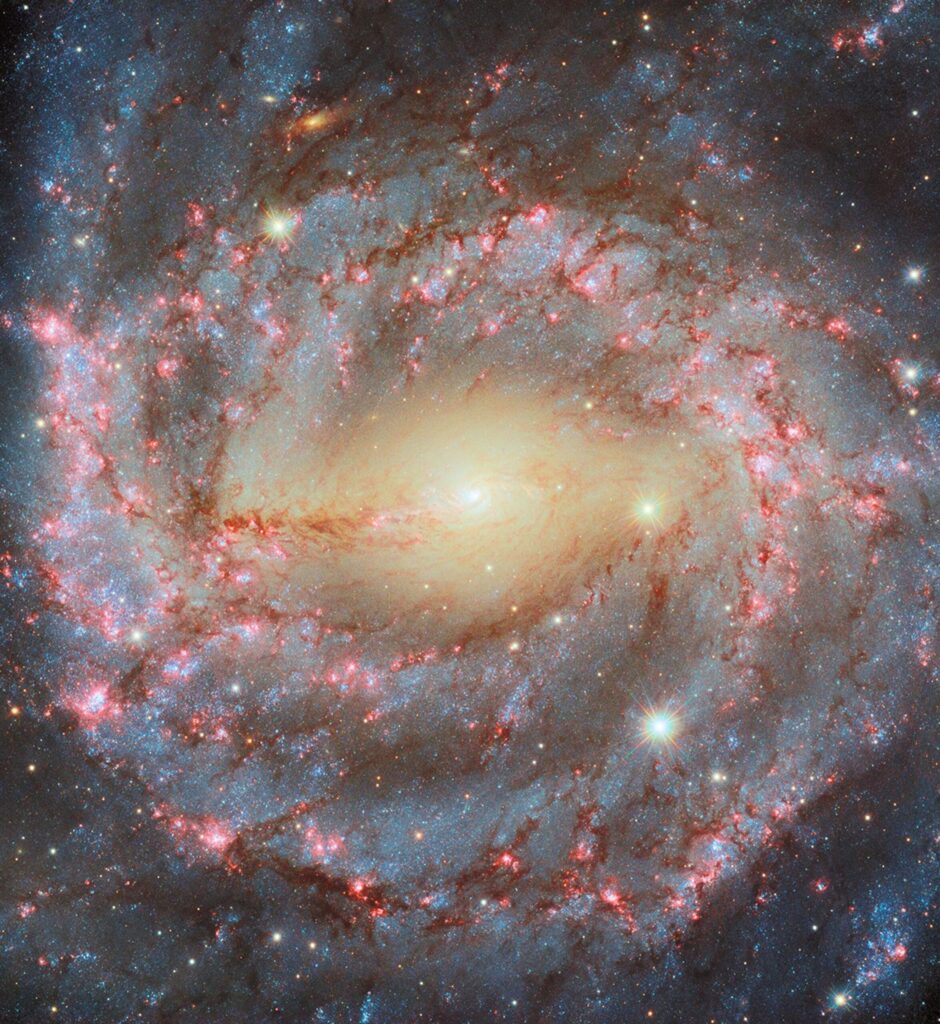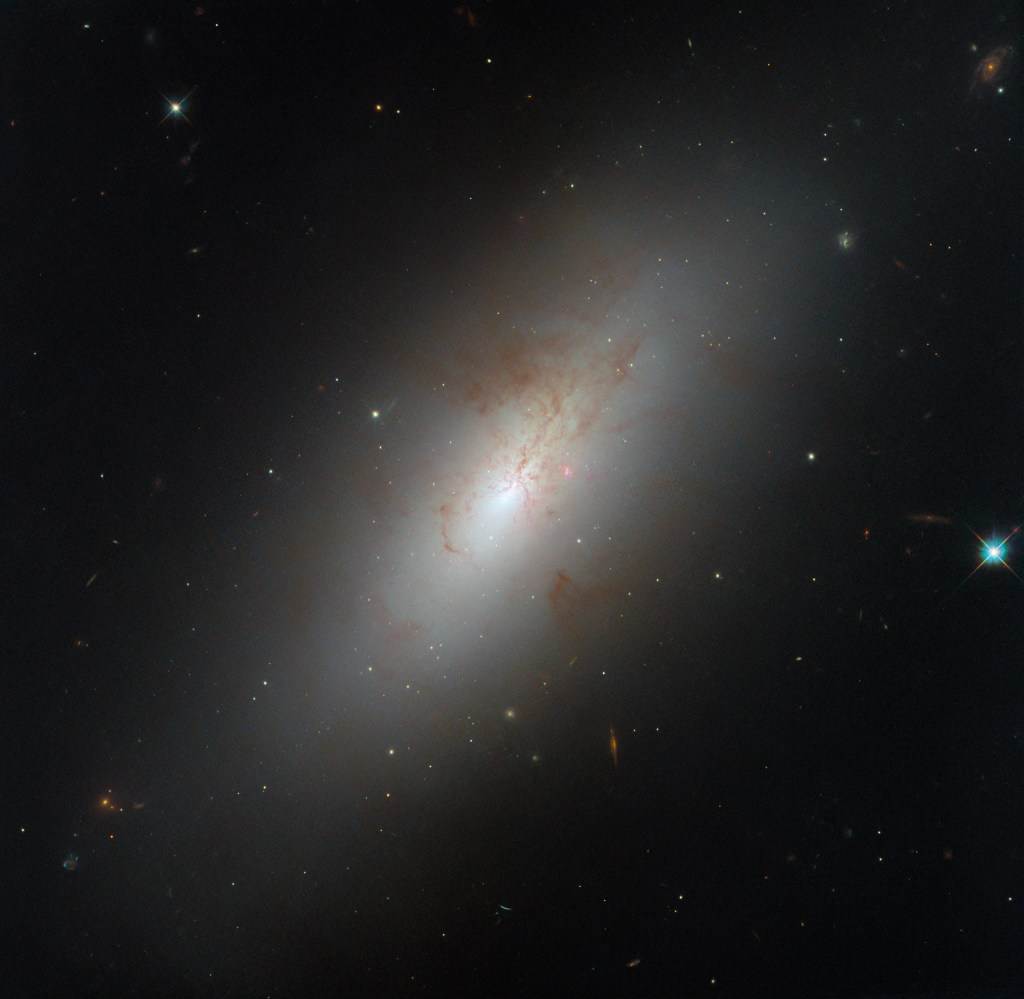Tag Archives: Hubble
Hubble Sees Dusty Spiral Galaxy: NGC 7496
NGC 7496 is a barred spiral galaxy located approximately 24 million light-years away in the constellation of Grus.This Hubble image shows NGC 7496, a barred spiral galaxy some 24 million light-years away in the constellation of Grus. Image credit: NASA / ESA / Hubble / R. Chandar / J. Lee / PHANGS-HST Team.NGC 7496 was discovered on September 5, 1834 by the English astronomer John Herschel.
Otherwise known as ESO 291-1, LEDA 70588 and IRAS 23069-4341, this galaxy is about 70,000 light-years across.
NGC 7496 is a member of the NGC 7582 group, a gathering of almost ten large galaxies.
The galaxy is also classified as a type II Seyfert galaxy with high star formation rate.
At the center of NGC 7496 lies an active galactic nucleus, a supermassive black hole that feasts on gas.
“Hubble first observed NGC 7496...
Hubble Images a Grand Spiral
This NASA/ESA Hubble Space Telescope image features the glorious spiral galaxy NGC 5643, which is located roughly 40 million light-years away in the constellation Lupus, the Wolf. NGC 5643 is a grand design spiral, which refers to the galaxy’s symmetrical form with two large, winding spiral arms that are clearly visible. Bright-blue stars define the galaxy’s spiral arms, along with lacy reddish-brown dust clouds and pink star-forming regions.
As fascinating as the galaxy appears at visible wavelengths, some of NGC 5643’s most interesting features are invisible to the human eye. Ultraviolet and X-ray images and spectra of NGC 5643 show that the galaxy hosts an active galactic nucleus: an especially bright galactic core powered by a feasting supermassive black hole. When a supermassive black hole ensnares gas from its surroundings, the gas collects in a disk...
Hubble Observes a Peculiar Galaxy Shape
NASA Space Technology This NASA/ESA Hubble Space Telescope image reveals the galaxy, NGC 4694. Most galaxies fall into one of two basic types. Spiral galaxies are young and energetic, filled with the gas needed to form new stars and sporting spiral arms that host these hot, bright youths. Elliptical galaxies have a much more pedestrian look, and their light comes from a uniform population of older and redder stars. But some galaxies require in-depth study to classify their type: such is the case with NGC 4694, a galaxy located 54 million light-years from Earth in the Virgo galaxy cluster.NGC 4694 has a smooth-looking, armless disk which like an elliptical galaxy is nearly devoid of star formation. Yet its stellar population is still relatively young and new stars are actively forming in its core,...
Hubble Captures Stellar Nurseries in a Majestic Spiral
NASA Space Technology This image from the NASA/ESA Hubble Space Telescope features the spiral galaxy IC 1954, located 45 million light-years from Earth in the constellation Horologium. It sports a glowing bar in its core, majestically winding spiral arms, and clouds of dark dust across it. Numerous glowing, pink spots across the disc of the galaxy are H-alpha regions that offer astronomers a view of star-forming nebulae, which are prominent emitters of red, H-alpha light. Some astronomers theorize that the galaxy’s ‘bar’ is actually an energetic star-forming region that just happens to lie over the galactic center.The data featured in this image come from a program that extends the cooperation among multiple observatories: Hubble, the infrared James Webb Space Telescope, and the Atacama Large Millimeter/submillimeter Array, a ground-based radio telescope. By surveying IC 1954 and...







